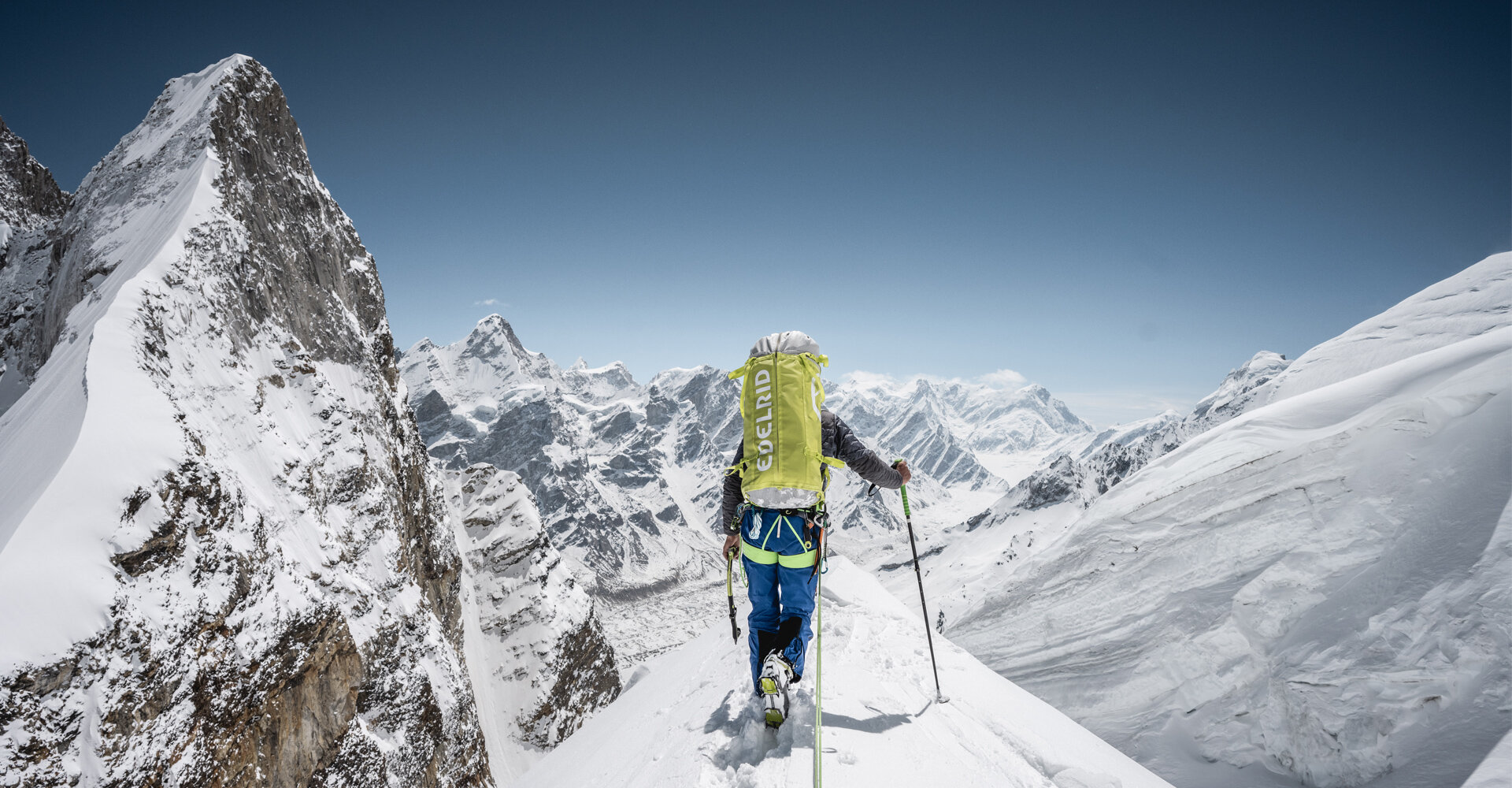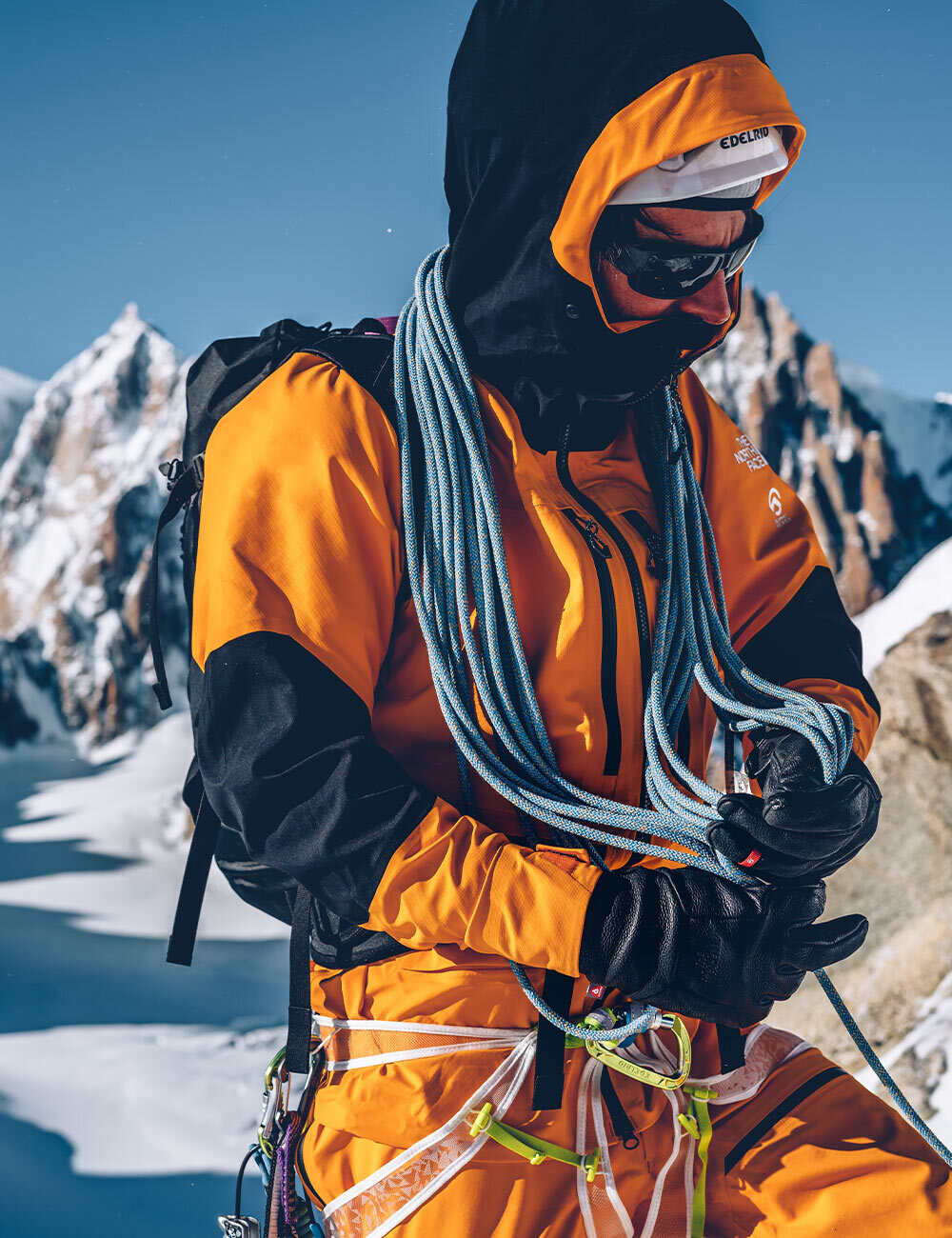The mountains demand versatile commitment and give us a lot in return
You’re on a razor-sharp ridge enjoying a breathtaking view of the surrounding mountains as the sun bathes the steep white slopes in shimmering light and the mighty summit cross towers up into the deep-blue sky. A shiver runs down your back. A typical, poignant moment of joy experienced by most mountaineers on reaching a summit.
Mountaineering comes in all sorts of guises depending on the time of year, region, and altitude. It can involve a spring tour in the Karwendel in Austria, a wintry high tour in the Swiss Alps, or a multi-week ascent of a seven-thousander in the Himalayas. The summit is usually the goal. And this can be reached in several ways. Hiking, scrambling, climbing, on skis, with crampons, via the standard route or up a famous north face. Nature throws multiple challenges at us: long, tiring trails, steep flanks, firn slopes, nerve-racking traverses, difficult rock steps, cold, wind, rain, ice, snow, glacial crevasses, or the risk of avalanche.
Safe excursions require extensive expertise and a firm knowledge of how to use your gear. But mountaineering is about more than just athletic achievement, reaching a summit, and safely returning home. Mountains have a magical draw. Their energy, their peace, and the beauty of untouched nature affect our body, mind, and soul. Austrian mountaineer Peter Habeler once fittingly summed up the overall experience of mountaineering: “The mountains aren’t just a challenge for me. They’re also a place of recuperation. My head clears as soon as I set off. I climb a mountain and when I return, I’m a different person.”




































